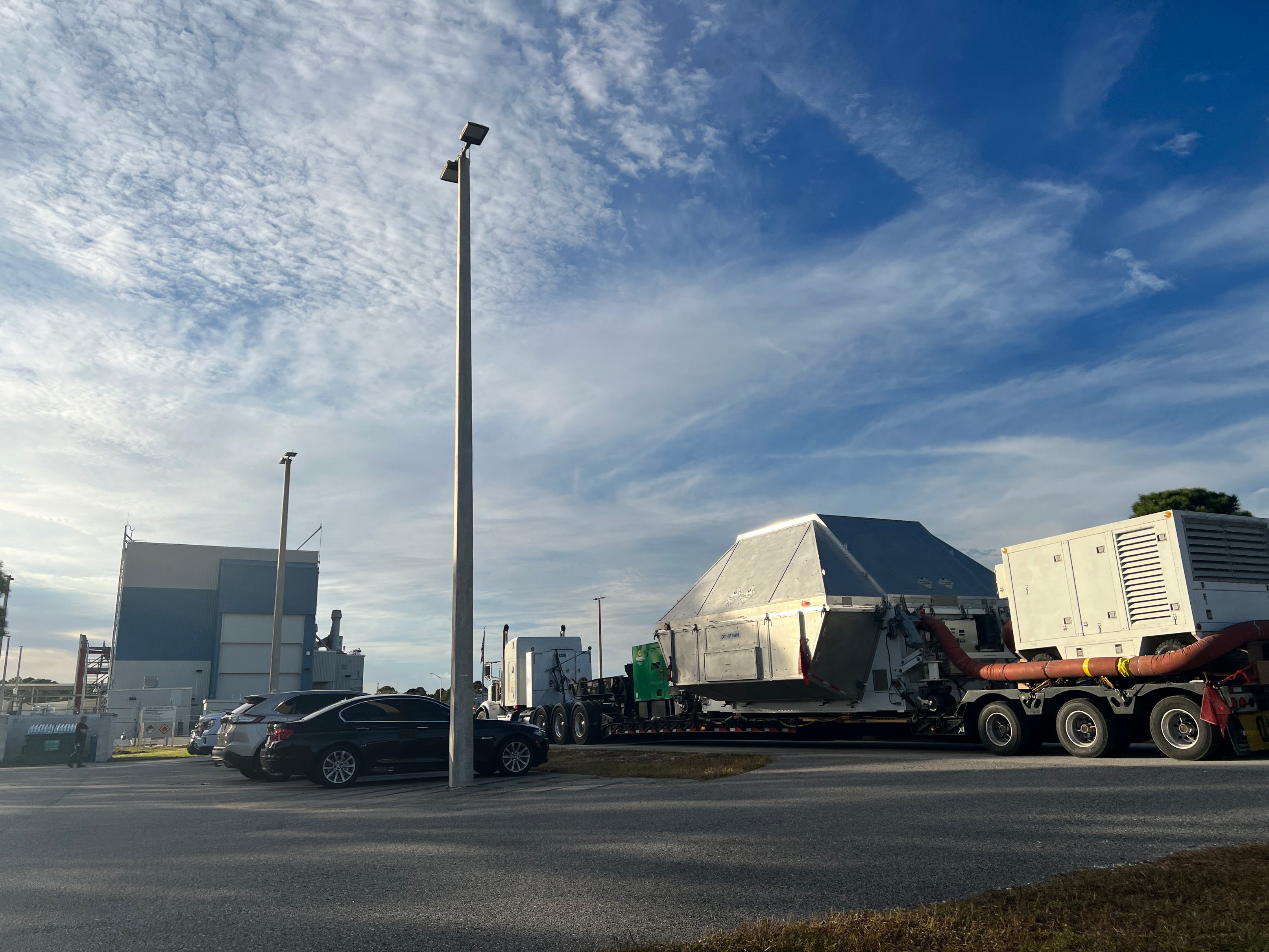NASA's Artemis 1 Orion spacecraft arrives in Florida (photos)

NASA's Artemis 1 Orion spacecraft is finally home.
Orion arrived at the agency's Kennedy Space Center (KSC) in Florida on Dec. 30, wrapping up a nine-day trek across the country on the back of a truck.
KSC was the jumping-off point for Orion's epic Artemis 1 moon mission, which sent the uncrewed capsule on a shakeout cruise to lunar orbit and back. Artemis 1 launched from KSC on Nov. 16 atop a Space Launch System (SLS) megarocket and ended with a splashdown in the Pacific Ocean off the coast of Baja California on Dec. 11.
Related: The 10 greatest images from NASA's Artemis 1 moon mission
It took two days for Orion to reach port in San Diego after that splashdown and an additional week or so for Artemis 1 team members to get the capsule ready for its long trip home, which began on Dec. 21.
That journey's end doesn't mean the Artemis 1 team can rest easy.
"Now that Orion is back at Kennedy, technicians will remove payloads from the capsule as part of de-servicing operations, including Commander Moonikin Campos, zero-gravity indicator Snoopy, and the official flight kit," NASA officials wrote in a blog post on Dec. 30. (Commander Moonikin Campos is an instrument-laden dummy that gathered a variety of data during the mission.)
Breaking space news, the latest updates on rocket launches, skywatching events and more!
"Orion's heat shield and other elements will be removed for extensive analysis, and remaining hazards will be offloaded," agency officials added.
Artemis 1 seemed to go incredibly smoothly from liftoff to splashdown. But mission team members will continue analyzing data over the coming months to make sure that SLS and Orion are ready to carry astronauts, which they're scheduled to do for the first time on the Artemis 2 mission in 2024.
Artemis 2 will send a crew around the moon and back to Earth. If all goes well with that flight, Artemis 3 will land astronauts near the lunar south pole in 2025 or 2026. NASA aims to build a crewed outpost in that region by the end of the decade, a key goad of the agency's Artemis program.
Mike Wall is the author of "Out There" (Grand Central Publishing, 2018; illustrated by Karl Tate), a book about the search for alien life. Follow him on Twitter @michaeldwall. Follow us on Twitter @Spacedotcom or Facebook.

Michael Wall is a Senior Space Writer with Space.com and joined the team in 2010. He primarily covers exoplanets, spaceflight and military space, but has been known to dabble in the space art beat. His book about the search for alien life, "Out There," was published on Nov. 13, 2018. Before becoming a science writer, Michael worked as a herpetologist and wildlife biologist. He has a Ph.D. in evolutionary biology from the University of Sydney, Australia, a bachelor's degree from the University of Arizona, and a graduate certificate in science writing from the University of California, Santa Cruz. To find out what his latest project is, you can follow Michael on Twitter.

